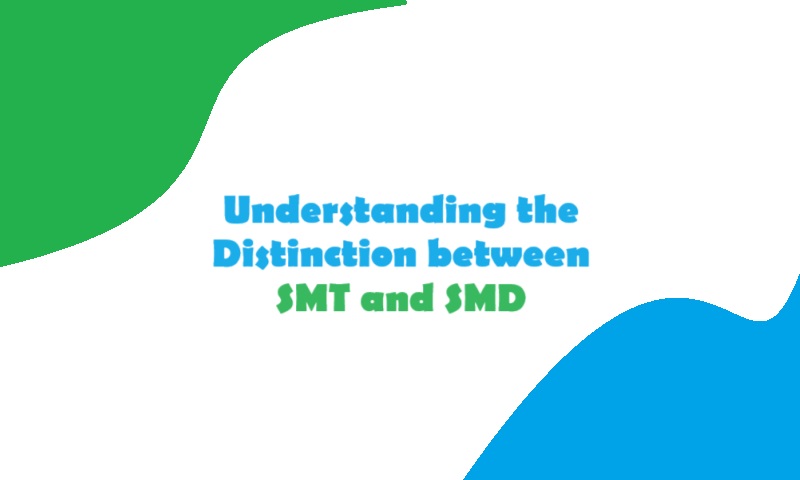When it comes to electronic components, terms like SMT and SMD are often used interchangeably, causing confusion among many people. However, it is important to understand that SMT (Surface Mount Technology) and SMD (Surface Mount Device) are not the same thing.
What is SMT?
SMT, or Surface Mount Technology, refers to the process of mounting electronic components directly onto the surface of a printed circuit board (PCB). This method has gained popularity over the years due to its numerous advantages over traditional through-hole technology.
In SMT, the components are soldered onto the surface of the PCB using solder paste. This paste is applied to the pads on the board, and then the components are placed on top of the paste. The entire assembly is then heated, causing the solder to melt and create a strong bond between the components and the PCB.
SMT offers several benefits, including smaller component sizes, reduced production costs, improved performance, and increased reliability. It also allows for higher component density on the PCB, enabling the creation of smaller and more compact electronic devices.
What is SMD?
SMD, or Surface Mount Device, on the other hand, refers to the individual electronic components themselves. These components are designed specifically for surface mounting onto PCBs during the SMT process.
SMD components are typically smaller in size compared to their through-hole counterparts. They are designed to have leads or terminals that can be directly soldered onto the surface of the PCB, eliminating the need for drilling holes and inserting leads through the board.
Common examples of SMD components include resistors, capacitors, diodes, transistors, integrated circuits (ICs), and many more. These components are manufactured with specific dimensions and soldering characteristics to ensure compatibility with SMT assembly processes.
The Difference between SMT and SMD
While SMT refers to the process of mounting components onto a PCB, SMD refers to the actual components themselves. In other words, SMT is the manufacturing technique, while SMD is the type of component used in that technique.
It is important to note that not all SMD components are used in SMT assembly. Some SMD components, such as large capacitors and connectors, may still be used in through-hole technology due to their size and mechanical requirements.
On the other hand, not all components used in SMT are SMD components. Some components, such as large transformers or heat sinks, may still be mounted on the surface of the PCB but are not considered SMD components due to their size or specialized nature.
You may also like: How RS485 Works and How to Implement RS485
In Conclusion
SMT and SMD are two distinct terms used in the field of electronics. SMT refers to the process of surface mounting components onto a PCB, while SMD refers to the specific components designed for this purpose.
Understanding the difference between SMT and SMD is crucial for anyone involved in the design, manufacturing, or repair of electronic devices. By utilizing SMT and SMD technologies appropriately, manufacturers can create smaller, more efficient, and reliable electronic products.
Next time you come across these terms, you can confidently distinguish between SMT and SMD, knowing that they represent different aspects of the electronic manufacturing process.
References: https://www.nextpcb.com/blog/what-is-the-difference-between-smt-and-smd
Photo by Pixabay: https://www.pexels.com/photo/green-computer-circuit-board-159220/

